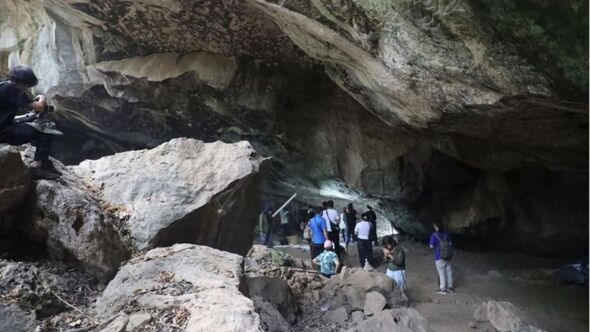Archaeologists have made a breakthrough that could rewrite the prehistory of Asia, uncovering Thailand’s oldest human skeleton to date. This remarkable find in Thailand extends the history of human occupation in the area by many millennia.
Nicknamed “Pangpond” after a much-loved Thai cartoon character, the ancient child’s remains were found in a secluded cave situated within the scenic Khao Sam Roi Yot National Park. The Fine Arts Department (FAD) made the announcement, highlighting that the juvenile burial, detected in the prehistoric rock art haven of Din Cave, is believed to surpass 29,000 years in age. It challenges established views on Thailand’s human history and offers an intimate look into people’s existence during the late Pleistocene epoch.
The FAD’s Director General, Phnombootra Chandrajoti, proclaimed: “This is a groundbreaking discovery that will reshape our understanding of early human presence in Southeast Asia.
“The careful burial and the associated artifacts provide invaluable insights into the rituals and daily lives of these ancient inhabitants.”
An FAD archaeologist elaborated on the significance of the burial method, saying: “The body was carefully placed and surrounded by stones, indicating a level of respect and care in the burial process.
“The positioning of the limbs, with the toes touching, suggests the body may have been wrapped or tied before burial.”
The child’s remains were discovered in a supine burial position, with the head facing southwest, indicating a purposeful and ritualistic interment. Preliminary analysis suggests the child was aged between 6 and 8 years at the time of death.
Based on soil and fossil examination of the upper layers, experts estimate the skeleton to be over 29,000 years old, dating it back to the late Pleistocene period. This find holds significance beyond Thailand.
Din Cave, situated 125 meters above sea level, has been an archaeological hotspot since prehistoric rock paintings were found there in 1996.
“The Din Cave site offers a unique window into the past, documenting the evolution of human societies over thousands of years,” stated a representative from the FAD.
“Further research and analysis will undoubtedly shed more light on the lives of these ancient people and their contributions to the region’s rich history.”
